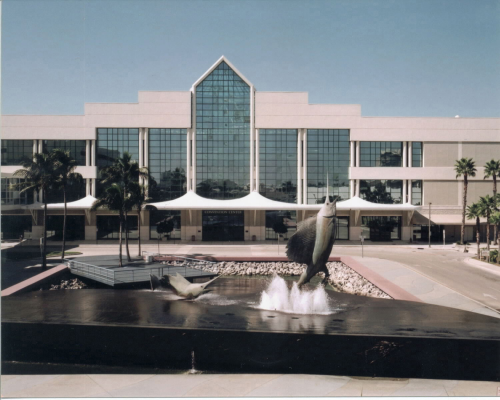
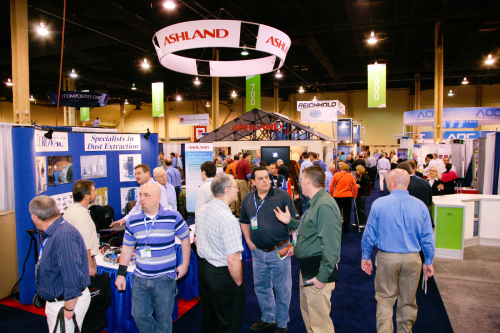

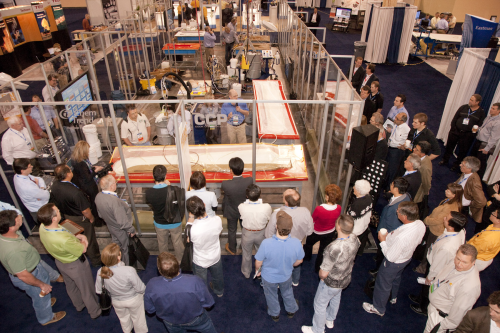
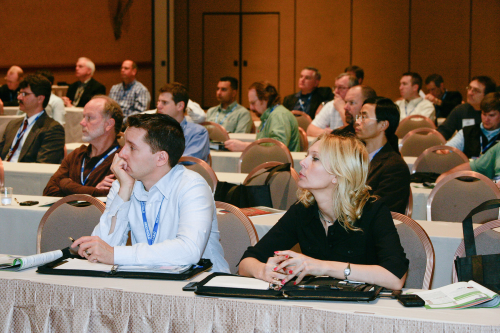
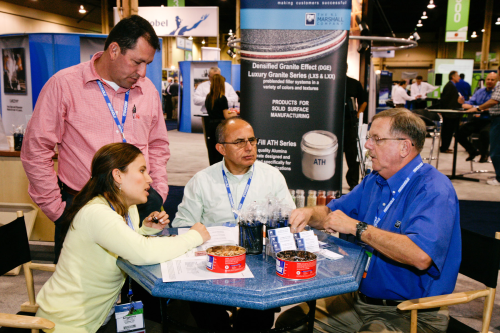
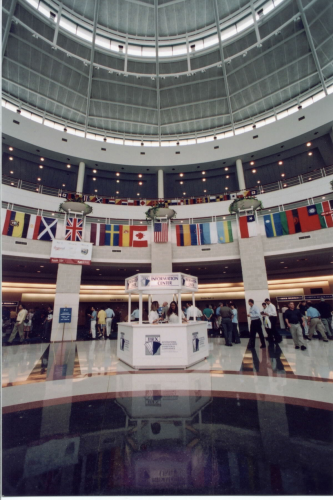
The composites industry in the USA generates significant economic activity: US$13.7 billion a year for composites manufacturers and $45.3 billion a year for impacted suppliers and manufacturers, according to the ACMA’s 2009 Composites Industry Report. US glass reinforced thermoset composites shipments totaled 2.18 billion lbs in 2009, with the largest portion (45%) going to construction, the association reports. The corrosion industry accounted for another 21%, while marine took 15% and transportation used 10%.
A report by Composite Insights relates that the North American composites industry has a strong, proven track record for high-volume usage with automated processes coupled with good design and development expertise. Impressive recovery in automotive, construction and marine industries is expected through 2014 and beyond. Demand for raw materials used in the composites industry is forecast to reach $7.1 billion by 2014, according to the report North American Composites Industry 2000-2014 (August 2009). Demand for thermoplastics composites is expected to grow at an above average rate through that period.
Boeing’s Current Market Outlook 2010-2029 predicts that air carriers in North America will take delivery of 7200 new aircraft, valued at $700 billion, over the next 19 years. Airplane age will become an issue as fuel-thirsty, older aircraft increasingly impact profits. The need to replace older, less efficient airplanes will account for 44% of the projected market for new airplanes worldwide. The greatest demand for new aircraft by market value will come from the US, followed by China, says Boeing.
In automotive applications, significant opportunities exist for composites in the North American automotive market, reports Lucintel, predicting the market will reach $1581.1 million in 2014. Declines in vehicle production from 2003 to 2008 were offset by greater demand for composites due to the necessity of improving fuel efficiency and vehicle durability while reducing maintenance costs, says Lucintel in its research report, Opportunities for Composites in the North American Automotive Market 2009-2014: Trends, Forecast and Opportunity Analysis (May 2009).
The high cost and lack of cost-effective manufacturing process for high-volume applications continue to be a limiting factor for increasing demand for composite materials in the North American automotive industry, the report notes. Lucintel expects demand for long fibre reinforced thermoplastic (LFRT) and light-weight reinforced thermoplastic materials in automotive applications to grow rapidly over the next five years.
Ford Motor Company’s CEO Alan Mulally sounded a pessimistic note regarding the widespread use of composite materials such as carbon fibre FRP in the US automobile industry. In an address reported in September by the Dow Jones Newswire, Mulally said Ford cannot make a business case for carbon composites citing the high volume required for mass production in the auto industry and the attendant costs of investing in autoclave ovens to cure the materials. He predicted that thermosets would win out over thermoplastics in the future, however.
Demand for wood-plastic composites and plastic lumber in the US is expected to grow 10.3% annually through 2013, reports the Freedonia Group in its report entitled Composite & Plastic Lumber (July 2009). “Gains will be driven by continued consumer acceptance of these products as replacement for more traditional materials, such as natural wood,” says Freedonia, predicting that decking will remain the leader because of their long service life and low maintenance. “Moreover, the increasing perception of these materials as environmentally friendly products … will promote further gains.
Composite and plastic fencing is expected to expand steadily annually through 2014, making gains over wood fencing in the residential market due to its lower maintenance, says Freedonia in its study, Fencing. Plastic and composite fencing products are seen as environmentally friendly materials that keep waste out of landfills, adds the study.
Growth of FRP pipe has been strong over the last 10 years throughout North America because of its advantages over pipes made of traditional materials such as iron, concrete and plastics, relates Lucintel in its study Opportunities of FRP Pipe Market in North America 2010-2015: Trends, Forecast and Opportunity Analysis (January 2010). “With increasing cost of iron and steel, FRP pipe has also emerged competitive in the large diameter pipe market, in high-pressure areas and in elaborate pipe networks extending over several thousand kilometres,” notes the report. The FRP pipe market in North America is expected to reach $563.1 million by 2015, it adds.
A major concern of the US composites industry is the regulation of styrene due to perceived health risks. In his President’s Message published in the ACMA’s Composites Manufacturing magazine (Fall 2010), Monty Felix, ACMA president, urged the organisation’s members to take a stand with the ACMA and “help fund our collective defence” against strict regulation of styrene, which is needed to produce high-quality products,” he stated.
Connect with the US industry
The ACMA, with more than 850 member companies, is the world’s largest trade group representing the composites industry, and Composites 2011 promises to be one of the biggest, most comprehensive trade shows it has ever presented. A broad range of business, professional and educational opportunities will be presented under one roof at the Ft. Lauderdale Convention Center. Supplier and manufacturer representatives from the entire spectrum of the composites industry and attendees from more than 40 countries will come together for the show. This year’s theme is Connect. Learn. Grow.
ACMA staff and committee people have developed a new format for Composites 2011 with a special focus on educational sessions, an expanded awards programme, a new segment featuring university poster sessions and plenty of unopposed exhibit hall hours, according to Marcy Offner, co-chair of the Composites 2011 Committee.
At the last show, more than 180 exhibitors packed the exhibit hall in Las Vegas. Even more are expected for February’s event. Several months before the show, exhibitor registrations were running 28% ahead of the same time last year, with many exhibitors new to the annual Composites show, the ACMA reports. Attendance is also expected to be strong, according to Offner, who is marketing manager at Composites One, a leading distributor of composites materials in North America.
Attendance at Composites 2010 exceeded 3000, which was up 18% from the previous year, according to the ACMA.
“I’m anticipating that we will do even better at this show," says Offner, who has attended a dozen of the ACMA’s Composites shows. "We’re bringing in new people who haven’t attended before but heard about the exciting things we did at the last show. We are hoping to educate the new people on the benefits of composites and hope to convert their manufacturing over to composites.”
Future needs
“One of the things we’ve tried to improve upon over the past few years is the educational programme,” she relates. “We’ve taken a hard look at our industry and where it’s going and what manufacturers need to succeed going forward. This year’s education programme is designed to provide attendees with the tools to move successfully towards the future.”
Education sessions will present how-to information, trouble shooting, best practices, industry trends, case studies and process assistance. Subjects will include composites tooling, processing, environment and green facility design, business management, market trends, regulatory issues and other topics needed to be successful in today’s competitive marketplace.
Several sessions will address emerging markets such as wind energy and utility poles, while others will provide information to help existing markets such as marine and recreational vehicle (RV) become more environmentally friendly. Since the show is being staged in Ft. Lauderdale, Florida, a good representation from the marine industry is expected, including manufacturers looking for ways to build better, more economical boats, Offner says. Process technology to help them do just that will be featured at the show.
The ACMA has added University Poster Sessions to the show, working with universities that offer composites programmes. The goal is to reach out to young people and encourage them to take a look at the composites industry as they make their career choices. The ACMA sees that as one of its priorities for the future.
In the exhibit hall, a stage will be set up for speakers, award presentations and panel discussions. One of the panels will consist of the Rising Stars in Composites, top achievers under 40 years old who will discuss career opportunities in the industry. Another panel, Women in Composites, will feature women working in various areas of the composites industry. Several specialized exhibit areas will also be located in the hall, including the Composites Europe Pavilion, Adhesives and Sealants Pavilion, University Pavilion and the Awards Pavilion.
Four-star leadership
At the general session on the first day, the keynote speaker will be retired US Army Gen. Stanley McChrystal, former commander of US and international forces in Afghanistan. He is expected to present a four-star management strategy, stressing openness, teamwork and forward-thinking. The General is also scheduled to discuss the use of composite materials in military applications.
On the second day, the general session will feature a futurist, to be announced, and a panel of representatives from emerging markets who will discuss a range of topics, including where composites fit into their industries, where they see the green movement going in their industries, and how composites manufacturers can get more involved in those industries. General sessions will be open to all attendees and exhibitors. Education sessions, technical paper presentations and networking events are scheduled for all three days.
A full programme of technical paper presentations is being prepared. Peer-reviewed papers will cover a range of categories, including infrastructure, polyurethane resin in composite applications, vacuum infusion processing and wind energy. They will present research on materials and products, cutting-edge applications, design protocol, code development, case histories and statistical analysis.
A half-day of topical presentations from the Society for the Advancement of Material and Processing Engineering (SAMPE) will be presented at Composites 2011 along with a session on thermoplastics presented by the Society of Plastics Engineers (SPE).
Awards programme
Central to the Composites show is the annual awards competition, which includes the ACE Awards for Composites Excellence and the Pinnacle Awards for innovation in cast polymer design and application. This year’s product competition is the most comprehensive that the ACMA has ever produced, according to John Busel, Director of the ACMA’s Composites Growth Initiative, who is heading up the awards programme.
“We reorganised the awards programme to address three major themes in the composites industry: Design, Manufacturing, and Market Growth,” explains Busel.
Under Design In the ACE competition, awards will be presented in Most Creative Application (products that are imaginative, innovative and artistic), and Innovation in Green Composites Design (products that exemplify innovation that minimises the environmental footprint of the product).
Under Manufacturing, awards focus on Process Innovation and Equipment Innovation, which is a new category open to the equipment suppliers, tooling manufacturers and software developers. The new award focuses on improving the manufacturing, production, environmental sustainability or product quality and performance in composites manufacturing, Busel explains.
Under Market Growth, awards will be presented for Infinite Possibility for Market Growth and Composites Sustainability, which evaluates how a product impacts one or more of the following: energy, water and emissions, as well as the end-of-life phase.
In the Pinnacle competition, awards will be given for Cast Polymer Design and Cast Polymer Excellence. Sustainability will also be considered in the judging of the entries in these categories, notes Busel. The International Cast Polymer Alliance will also present its awards, including Supplier of the Year and Manufacturer of the Year.
Environment looms large
In the educational programme, special emphasis will be placed on environmental sustainability and the greening of the composites industry, reports Julie Keith, co-chair of the Green Composites Education Subcommittee for the show.
“An education track covers everything from what is green to ways to build a competitive advantage through sustainability and green initiatives,” she says.
One topic, Growth Potential Beyond Wind, addresses wind energy and components for wind turbines made of composite materials. Several sessions will address life-cycle inventory and assessment, she relates.
The ACMA is building a Life Cycle Inventory (LCI) database of information to evaluate the energy used to manufacture and transport composites and the raw materials that make up composites, observes Keith, who works with Crane Composites, a leading supplier of fibre-reinforced panels and materials. The LCI database will help manufacturers analyse the environmental impact of their products and processes, she reports.
|
A number of exhibitors are planning live demonstrations in the exhibit hall. Composites One, together with the Closed Mold Alliance, will conduct a large-scale demonstration of closed moulding techniques and new technologies related to wind turbine components, according to Marcy Offner, co-chair of the Composites 2011 Committee. Member companies of the Closed Mold Alliance will provide materials. In a booth set up like a closed mould shop, multiple parts will be produced using three closed-mould processes. In a Light RTM (resin transfer moulding) demonstration, a scaled-down version of a nacelle, the housing of a wind turbine, will be produced. A VIP (vacuum infusion process) demonstration will mould 10-ft-long (3.05 m) wind turbine blades, on the same scale as the nacelle. The demonstration will incorporate a temperature-controlled mould to control the cure process. The Flex Moulding process, an off-shoot of Closed Cavity Bag Moulding, will be demonstrated, also producing 10-ft blades. A new technology developed by Magnum Venus Plastech that sprays silicon onto the mould to create a counter mould will also be shown, reports Offner. Other innovative products will also be demonstrated in the booth, including some green products. |
Natural fibres are the subject of another education session, notes Keith, who expects to see an increase in applications using green reinforcements: “It’s still early, but I think everyone is interested in it and looking for ways to incorporate natural materials into composites.”
She is looking forward to the Composites show for opportunities to discuss sustainability initiatives with others in the industry.
“Things are changing so fast for us in terms of how we look at our traditional materials and traditional processing,” she says, noting that the building materials industry is especially interested in sustainability and green composites. The use of sustainable building materials is being driven by a program of the US Green Building Council called LEED® (Leadership in Energy and Environmental Design), she relates.
The LEED programme, which incorporates a third-party certification system, rates buildings on their sustainability, based on construction methods, materials and other criteria.“LEED is starting to play a big role in the composites industry because the building materials market is a large part of our customer base,” Keith reports.
This article was published in the November/December 2010 issue of Reinforced Plastics magazine.






